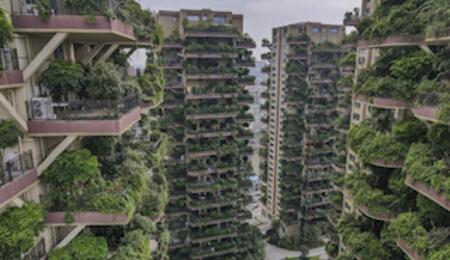Are Forest Cities the Future?

How are we going to make the world more sustainable? One answer is to change our environments and create a new environment that is more in step with nature. This has been addressed in plans for the world's first forest city. If successful, it could become the template for how we build habitats in the future and improve old ones.
Construction on the world's first forest city has been completed in China's Liuzhou region, Guangxi Province, beside the Liuzhou river, with a 225-hectare city area an overall green space of 25,000 hectares. Liuzhou is currently a mid-sized Chinese city of about 1.5 million residents located in the southern province of Guangxi.
The forest city is China's endeavour to manage its pollution problem and house its fast-rising population. As it stands, China currently has 160 cities with a population greater than 1 million. All of which suffer from heavy smog issues originating from various sources, including power plants, coal, and vehicle pollution.
China also has the highest rate of urbanisation worldwide. Over 14 million inhabitants migrate to China's cities annually. The skyscraper design of the new town will accommodate more people in the new city's geographical footprint than low-rise homes would. As well as to maximise land for farming and outdoor leisure. The municipality comprises dozens of tall and middle-size buildings or "Vertical Forests". Trees surround them (ranging from 3-to 9 meters), shrubs and flowering plants. Each Vertical Forest has plants equivalent to 20,000 square meters of a natural forest grafted upon it.
The Liuzhou forest city can accommodate 30,000 residents who benefit from more than 40,000 trees and 1 million plants of more than 100 species. This plant life will work to absorb 10,000 tons of CO2 along with 57 tons of pollutants, as well as and producing roughly 900 tons of oxygen yearly.
The authorities wanted 70 buildings cascading with foliage. The forest city is also self-sufficient, helping to reduce the air temperature, improve air quality, create noise barriers, generate habitats for wildlife. The whole town is also being on stand by to run on renewable energy, such as geothermal and solar. There are even projects to connect the new city via a short road.
It would seem that Chinese officials have accepted the need to find a more sustainable model of urban living. This form consists of 100,000 people or fewer settlements entirely constructed of "green architecture" rather than substantial metropolitan environments.
"They have created these nightmares", he goes on to say. "They have to imagine a new city model that is not about extending and expanding but a system of small, green cities."
It is hoped that the Liuzhou Forest City could become the model by which all Chinese cities are built in the future.






